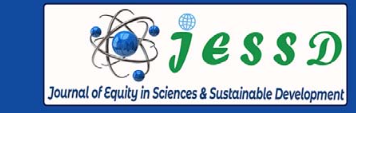An Assessment of the Current Status of using the Learner-Centered Approach in first year Students at Madda Walabu University
Abstract
The student-centered approach is a method of teaching in which the focus of instruction is shifted from the teacher to the students. This approach is not practiced as expected at the university level. The purpose of this study was to investigate the current status of using the learner-centered approach in First Year students at Madda Walabu University. A descriptive survey re-search method was employed. A total of 206 samples including 149 students, 44 teachers, 12 department heads, and one Higher Diploma leader were intercepted for data collection. Questionnaires, focus group discussions, and observation checklists were employed for collecting relevant data. Quantitative data that were obtained through questionnaires were analyzed using statistical tools like frequency, percentage, mean, standard deviation, and an independent sample t-test; whereas qualitative data gathered through focus group discussion and observation checklist were analyzed thematically. The major findings revealed that the lecture was not working for the success of the current status of the learner-centred approach. Besides, large numbers of students in the classroom, and lack of administrative support was the major bottle-necks in implementing the learner-cantered approach. Therefore, to alleviate these problems, the college education giving adequate in-service training on the implementation of learner-centre methods, the the university should prepare short-term training on the implementation of learnercentre methods.
Downloads
Copyright (c) 2021 Journal of Equity in Sciences and Sustainable Development

This work is licensed under a Creative Commons Attribution-NonCommercial 4.0 International License.
